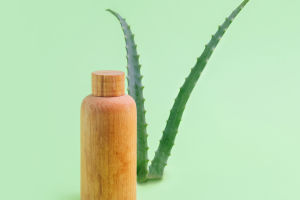Lavender is a beloved plant known for its aromatic properties and therapeutic benefits.
The distillation process is the primary method used to extract essential oil and hydrosol from lavender, showcasing the plant's versatility and the beauty of nature’s chemistry.
The journey begins with harvesting lavender flowers at their peak bloom, typically in the late morning when the dew has evaporated, ensuring the highest oil content.
After harvesting, the flowers are lightly dried, as excess moisture can hinder the distillation process. This drying is done in the shade to preserve the delicate essential oils, avoiding exposure to direct sunlight which could degrade their quality.
Once prepared, the dried lavender is placed in a steam distillation apparatus. This method is favored for its effectiveness in capturing delicate fragrances and therapeutic compounds without damaging them.
Steam is introduced to the plant material, and as the steam rises through the lavender, it vaporizes the essential oils. The mixture of steam and vaporized oil travels through a condenser, where it cools and transforms back into liquid form.
The resulting liquid is a combination of water and essential oil. Because essential oil is less dense than water, it floats on the surface, making separation straightforward.
The clear water left after the essential oil is removed is referred to as hydrosol. This hydrosol, often called lavender water, retains many of the therapeutic properties of the essential oil, albeit in a milder form.
Lavender essential oil is renowned for its calming and soothing properties, characterized by its fresh, floral aroma that evokes tranquility. It contains several chemical constituents, including linalool and linalyl acetate, which contribute to its therapeutic effects.
Aromatherapists widely use lavender essential oil for its ability to reduce anxiety, promote restful sleep, and enhance overall emotional well-being. It is commonly found in diffusers, massage oils, and bath products, providing a serene experience for users.
In addition to its aromatic benefits, lavender essential oil possesses antiseptic and anti-inflammatory properties. It can be applied topically to minor cuts, burns, and insect bites to aid in healing and reduce irritation. The oil’s ability to alleviate skin issues makes it a popular ingredient in skincare formulations, where it is valued for its soothing qualities.
Hydrosol, the byproduct of the distillation process, is gaining popularity in various applications. Its gentler nature makes it suitable for skin care, particularly for sensitive skin.
Lavender hydrosol can be used as a facial mist, or toner, or added to lotions and creams, offering a refreshing and calming experience. Additionally, it can be incorporated into culinary creations, such as herbal teas and desserts, providing a unique floral flavor.
Both lavender essential oil and hydrosol have a rich history of use in traditional medicine and wellness practices. They have been utilized for centuries to promote relaxation, enhance mood, and support overall health. Today, they continue to be embraced in holistic and natural healing approaches, appealing to those seeking alternatives to conventional remedies.
The distillation of lavender essential oil and hydrosol highlights the incredible potential of this remarkable plant. The process not only preserves the aromatic and therapeutic qualities of lavender but also showcases the art of transforming a simple flower into versatile products that enhance well-being.
Whether through the calming scent of essential oil or the gentle touch of hydrosol, lavender remains a cherished staple in the realm of natural health and beauty.
As more people turn to nature for their wellness needs, the enduring legacy of lavender continues to flourish, providing solace and healing in an increasingly fast-paced world.


